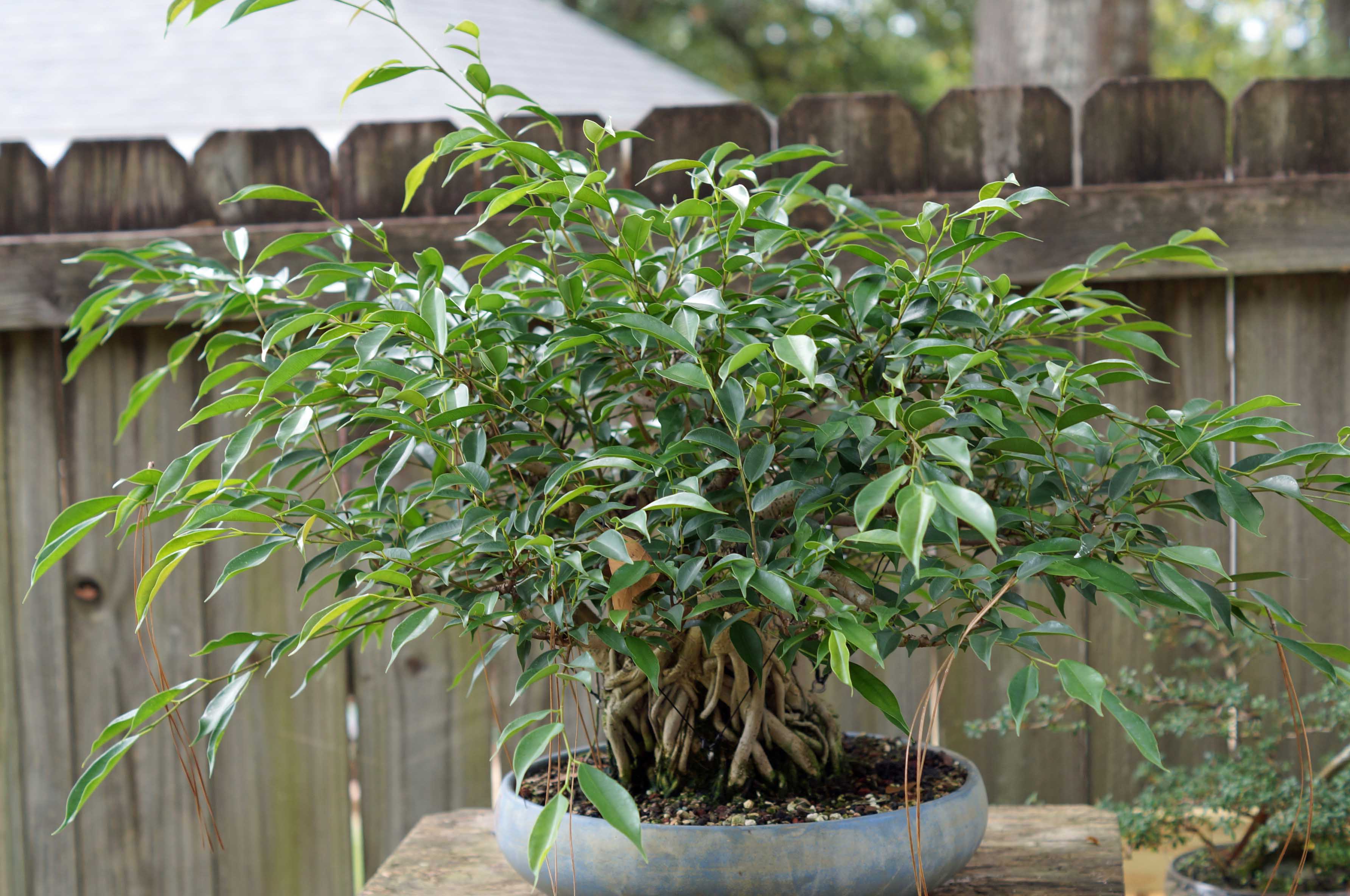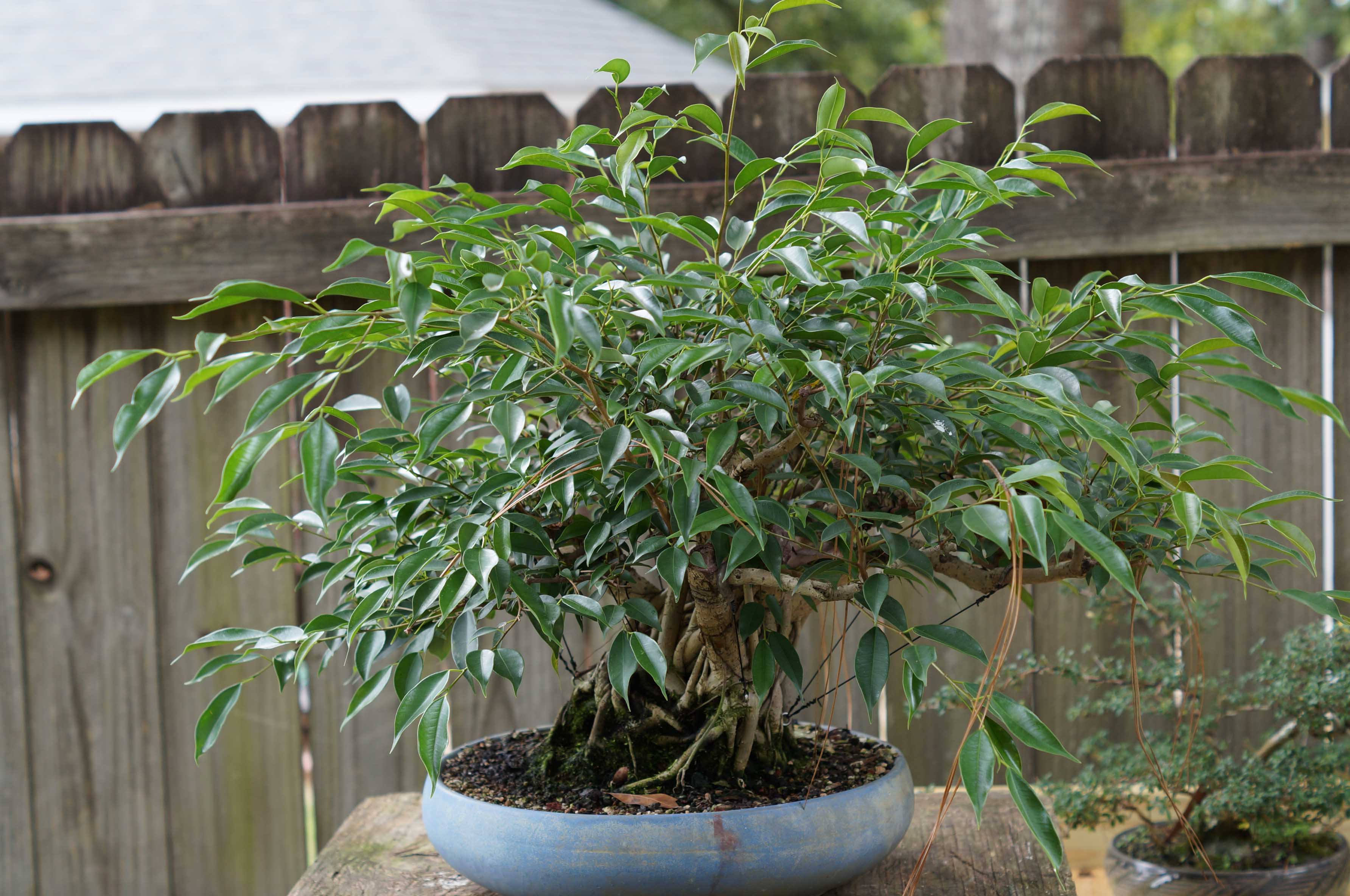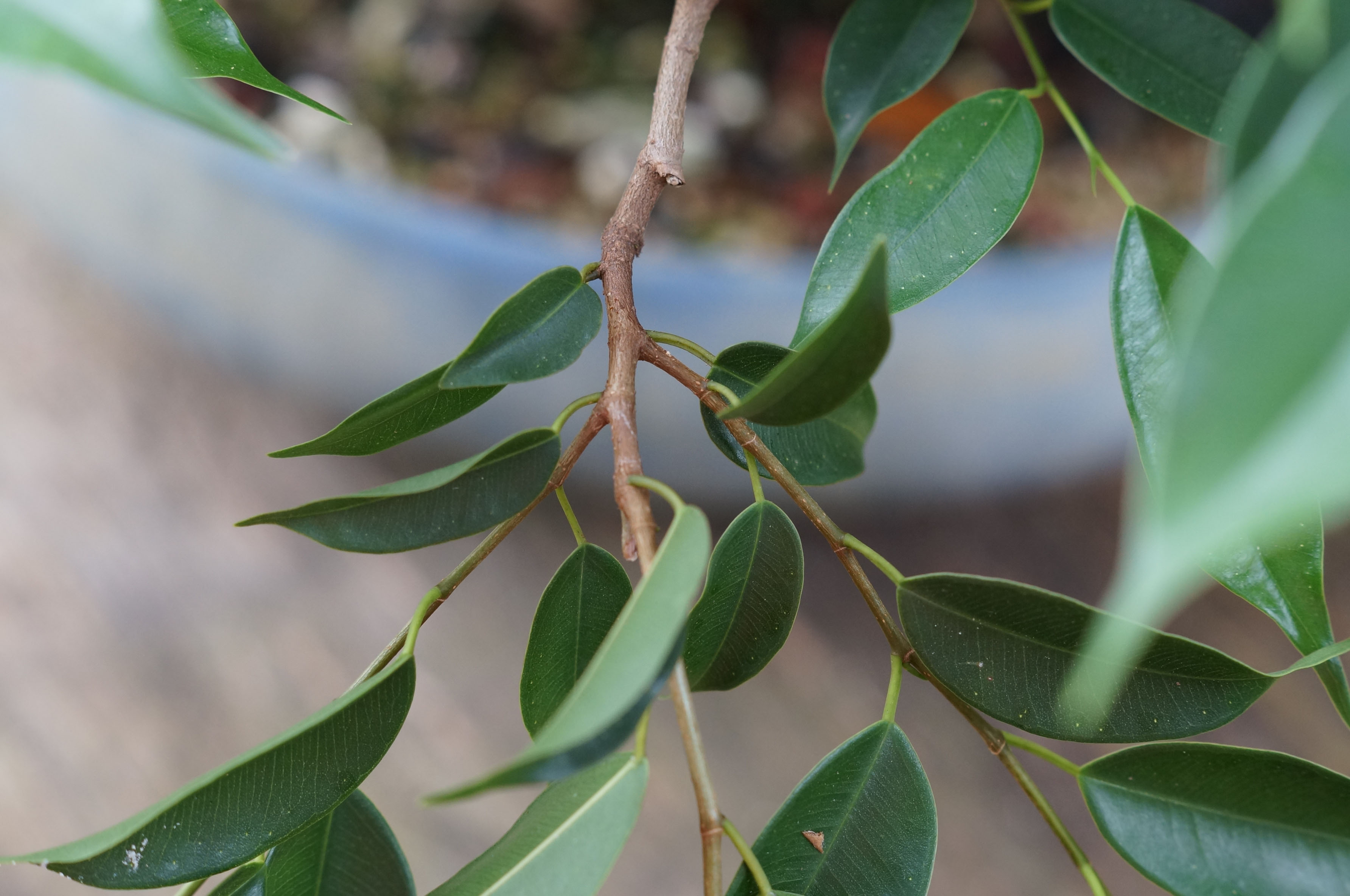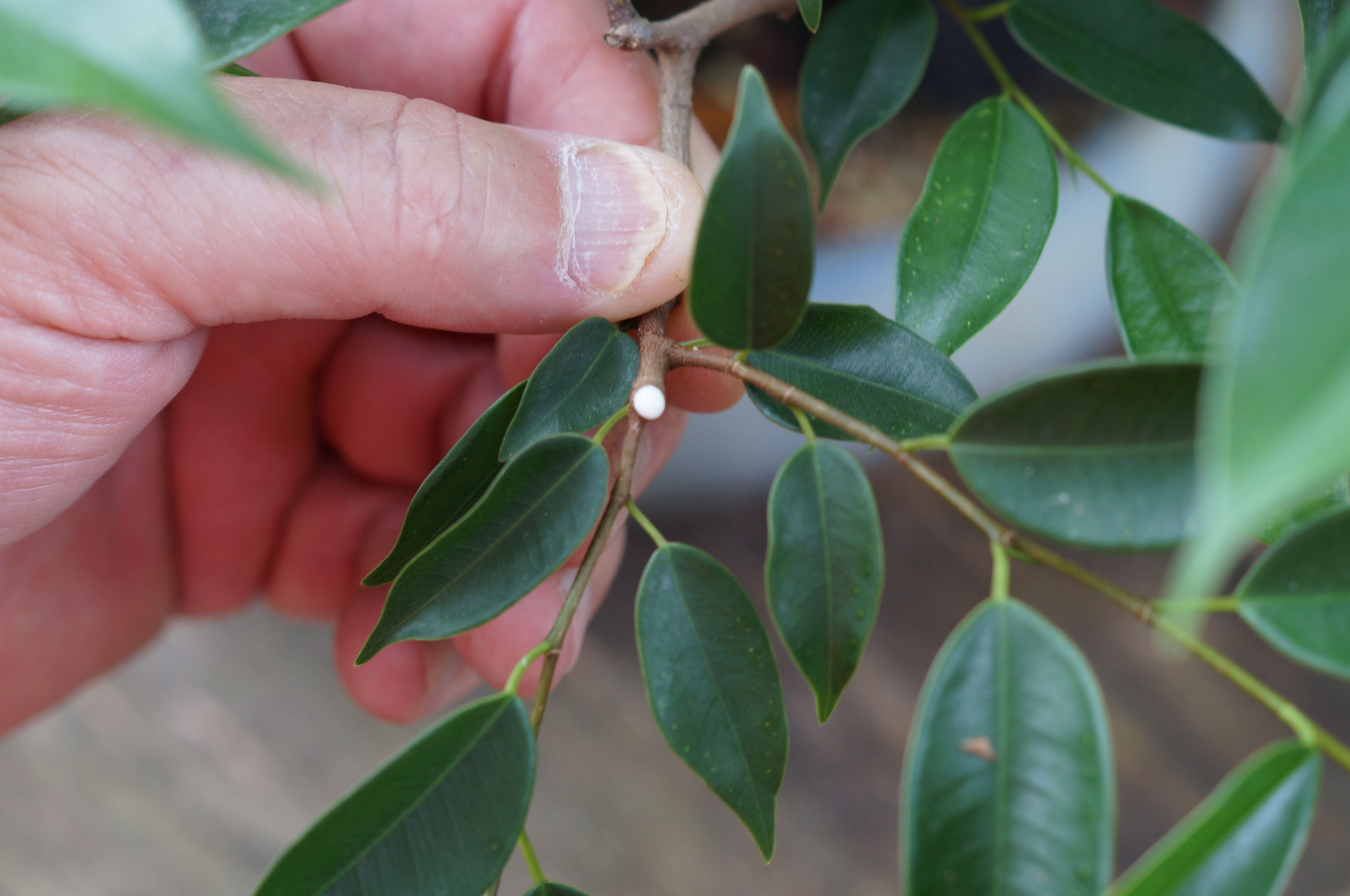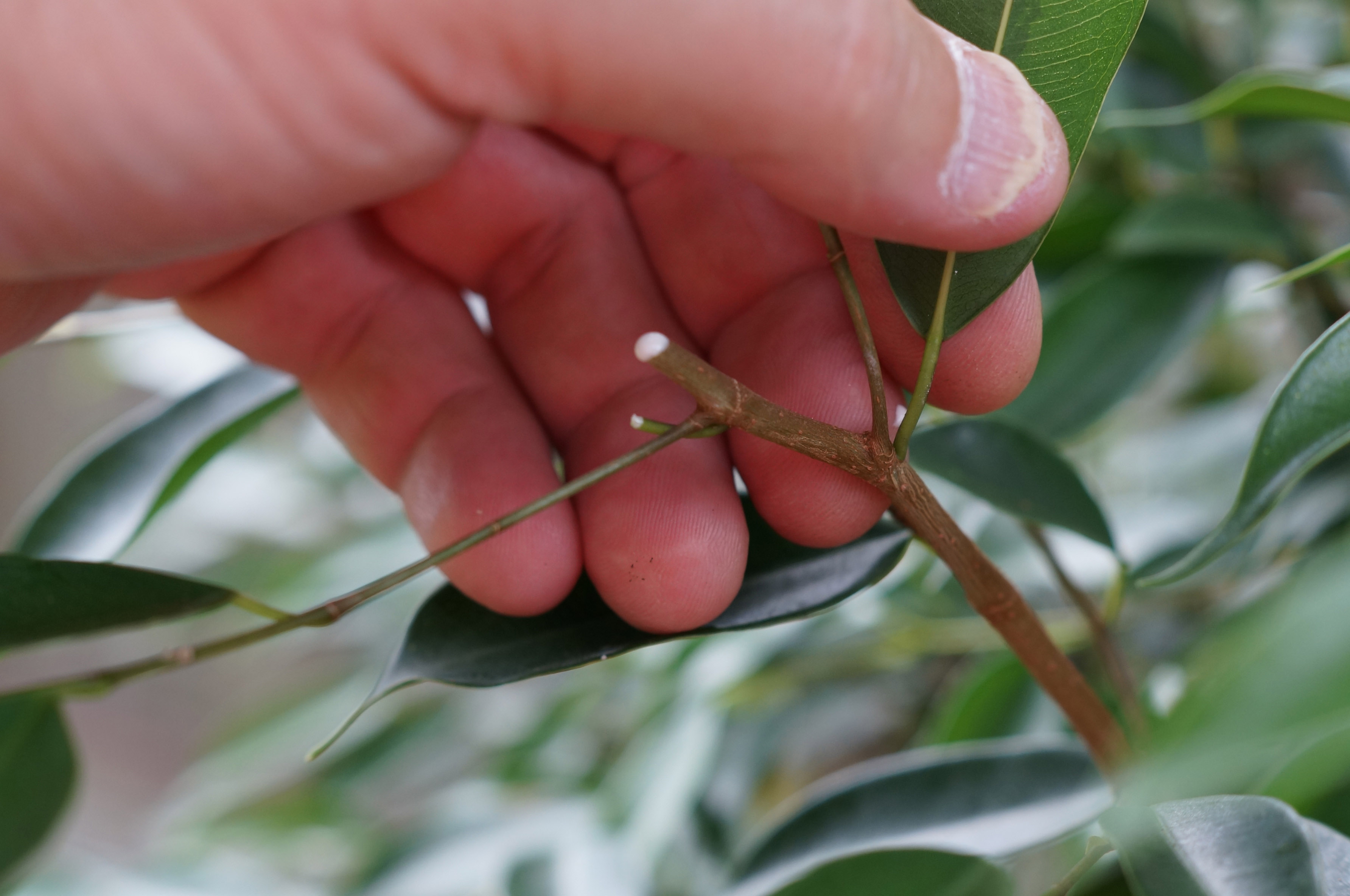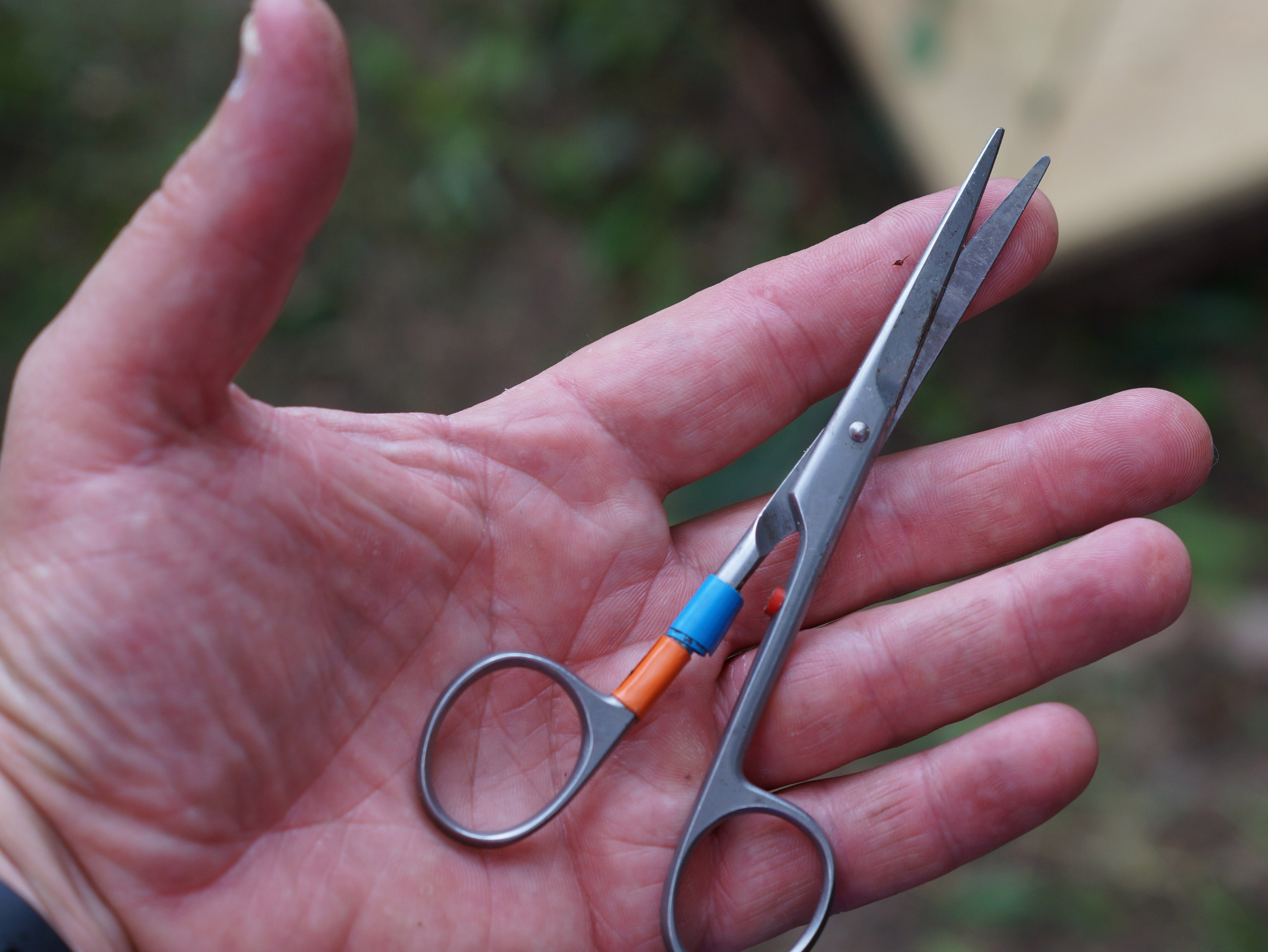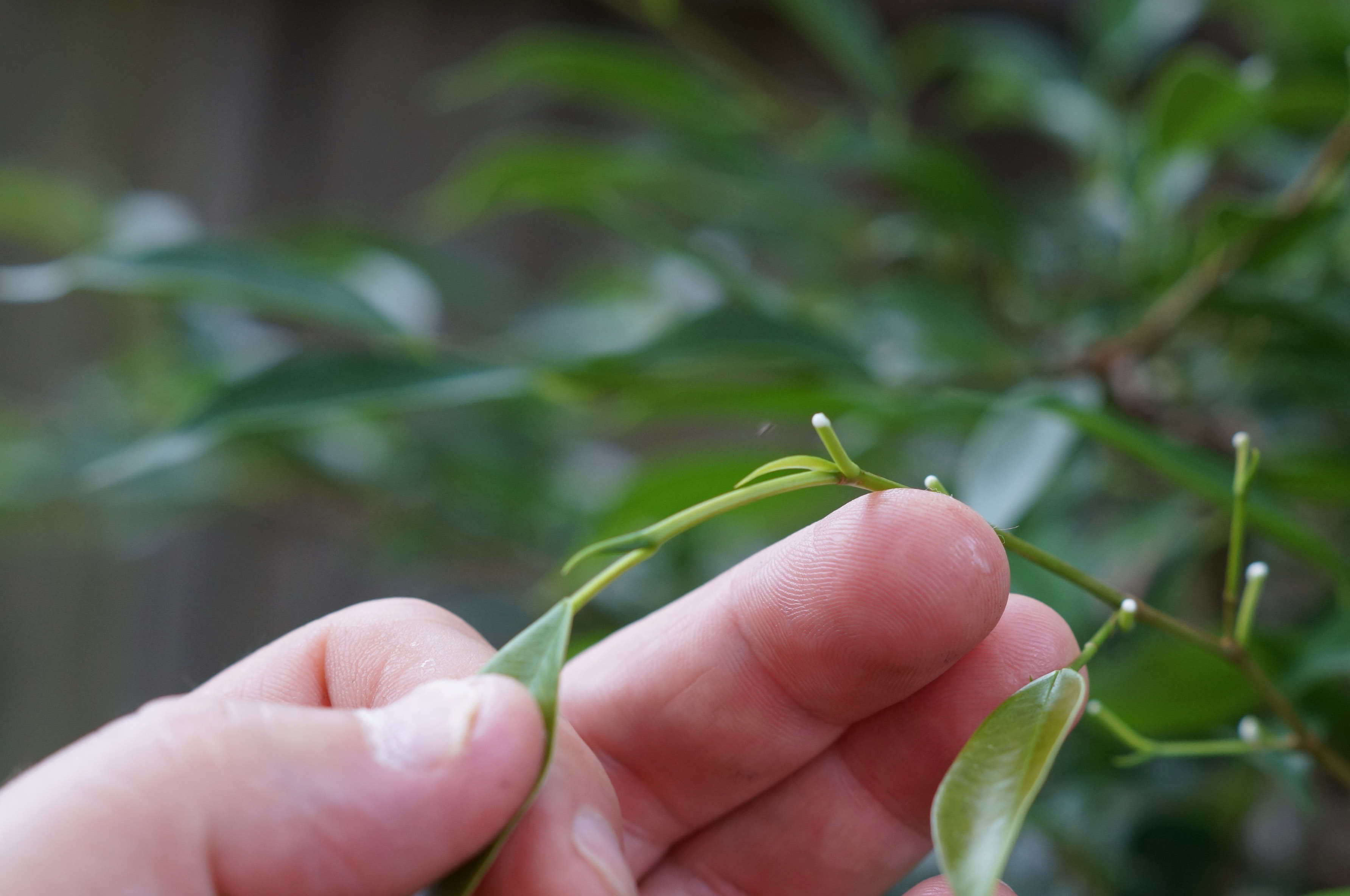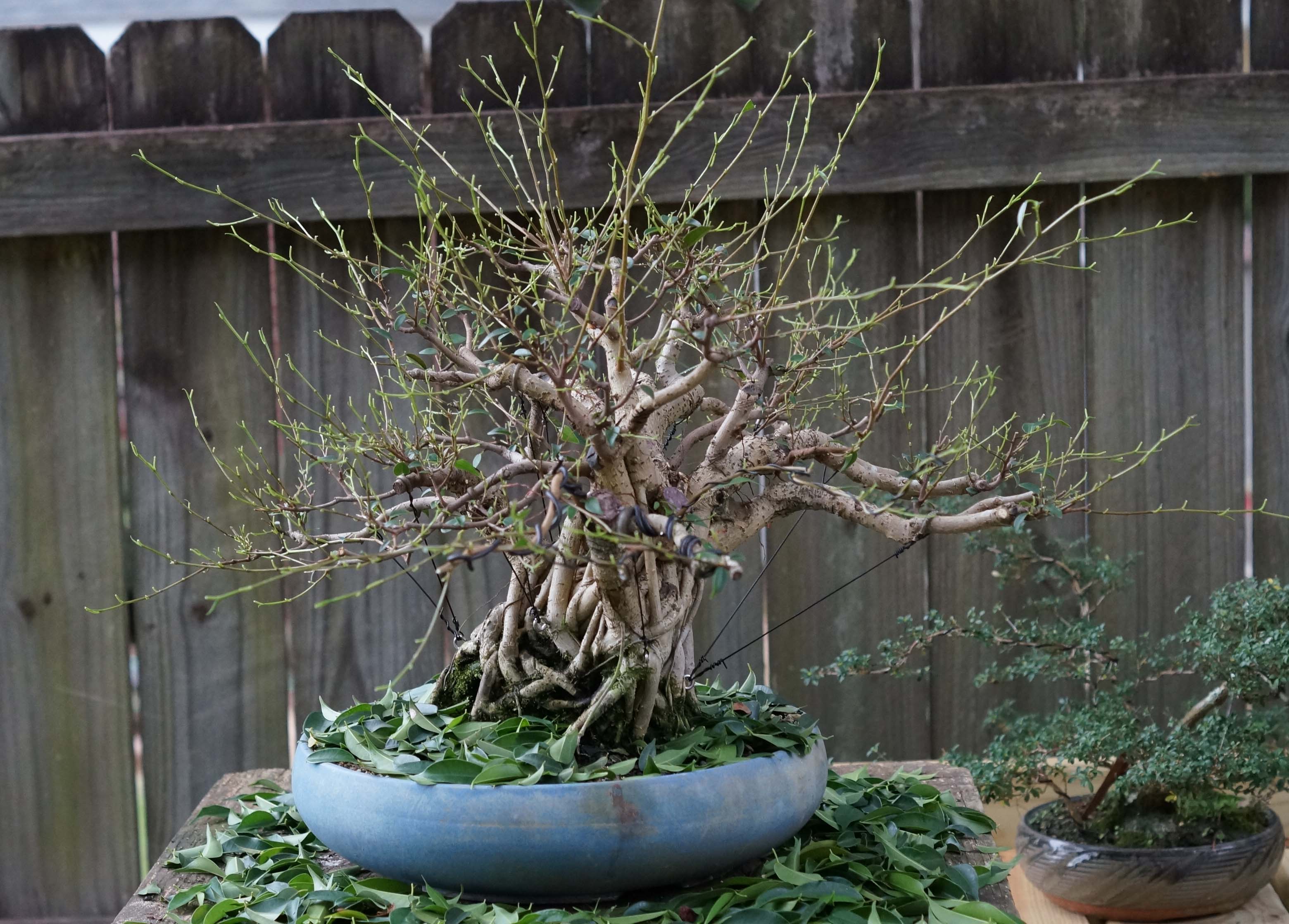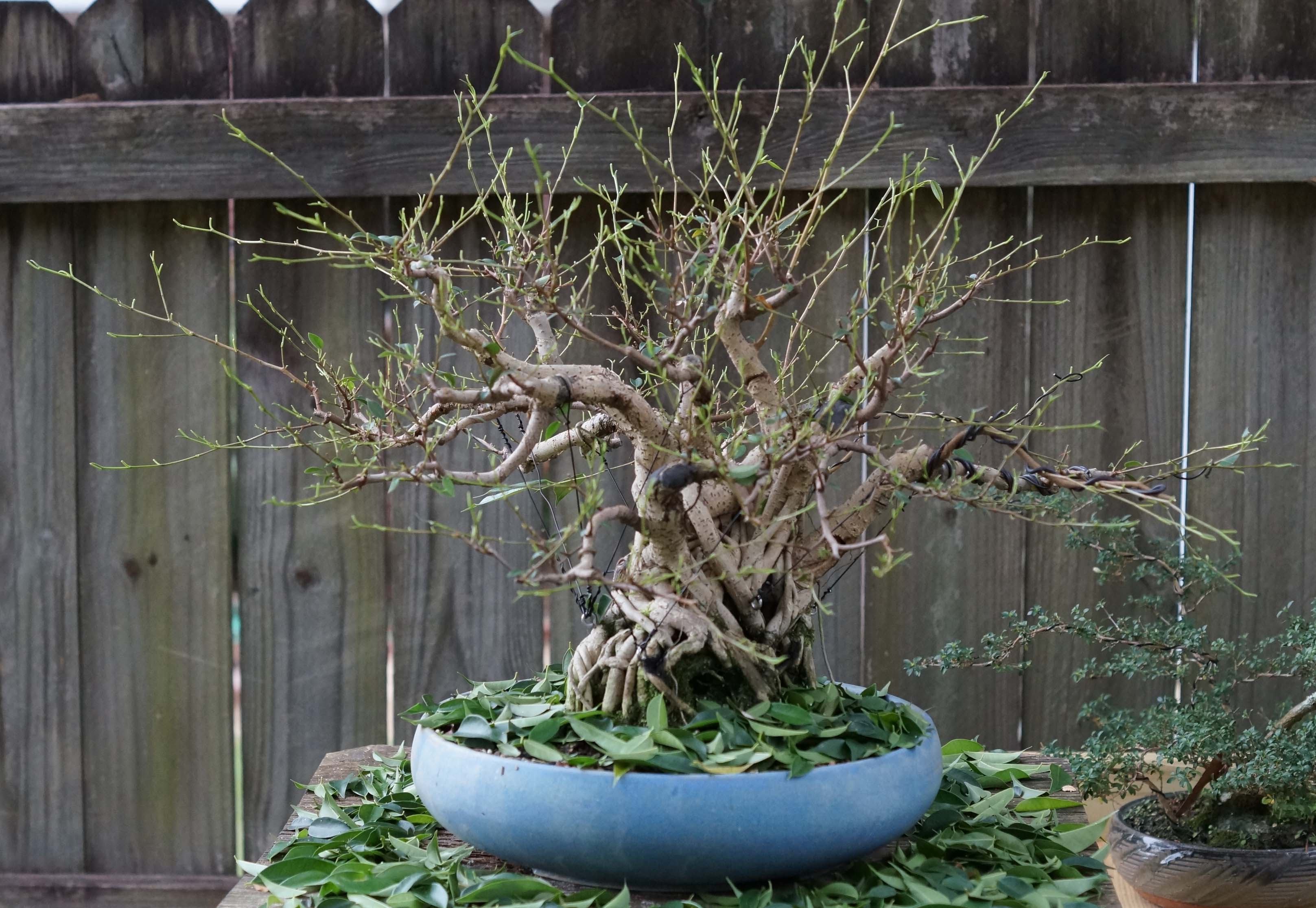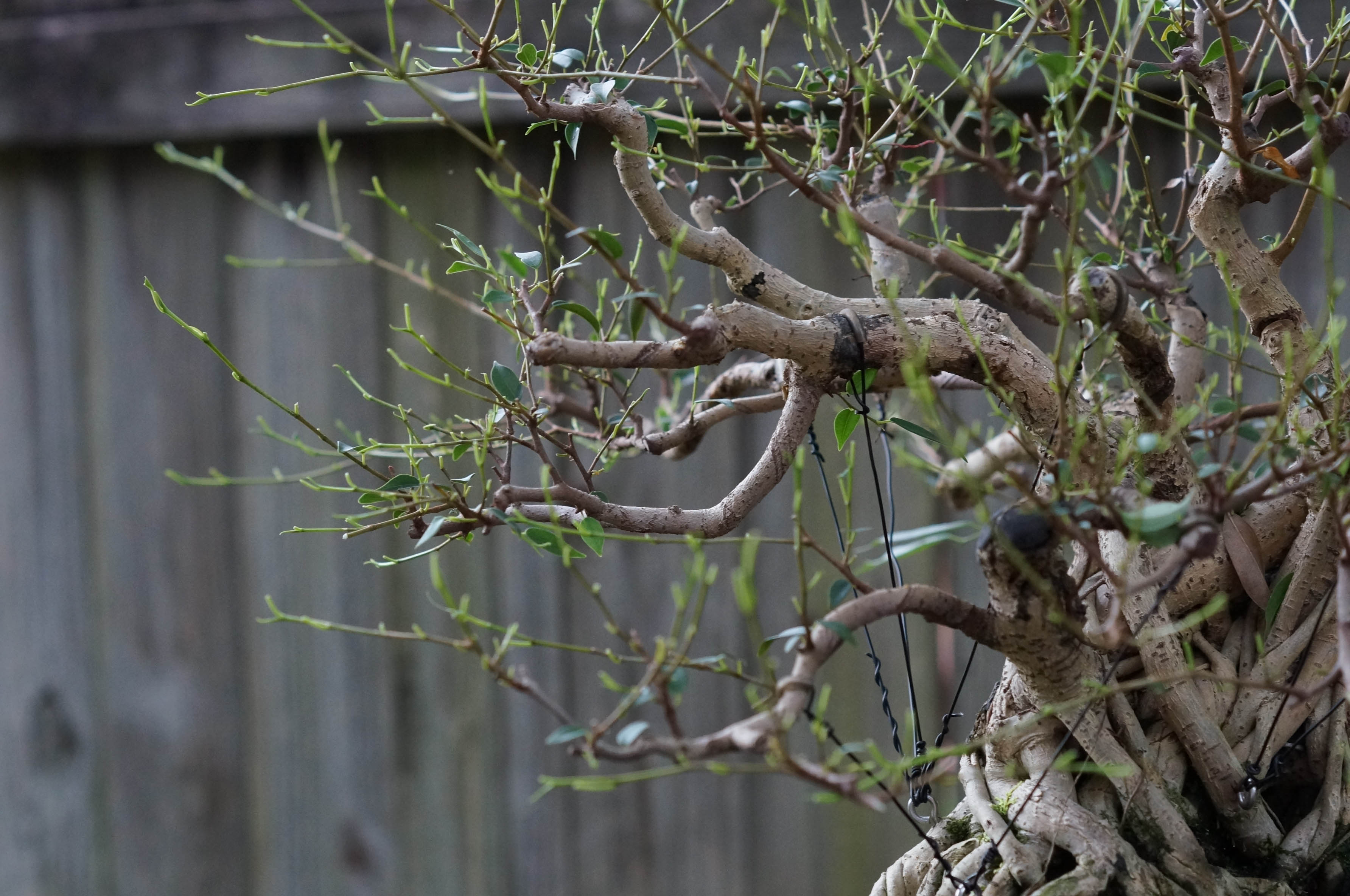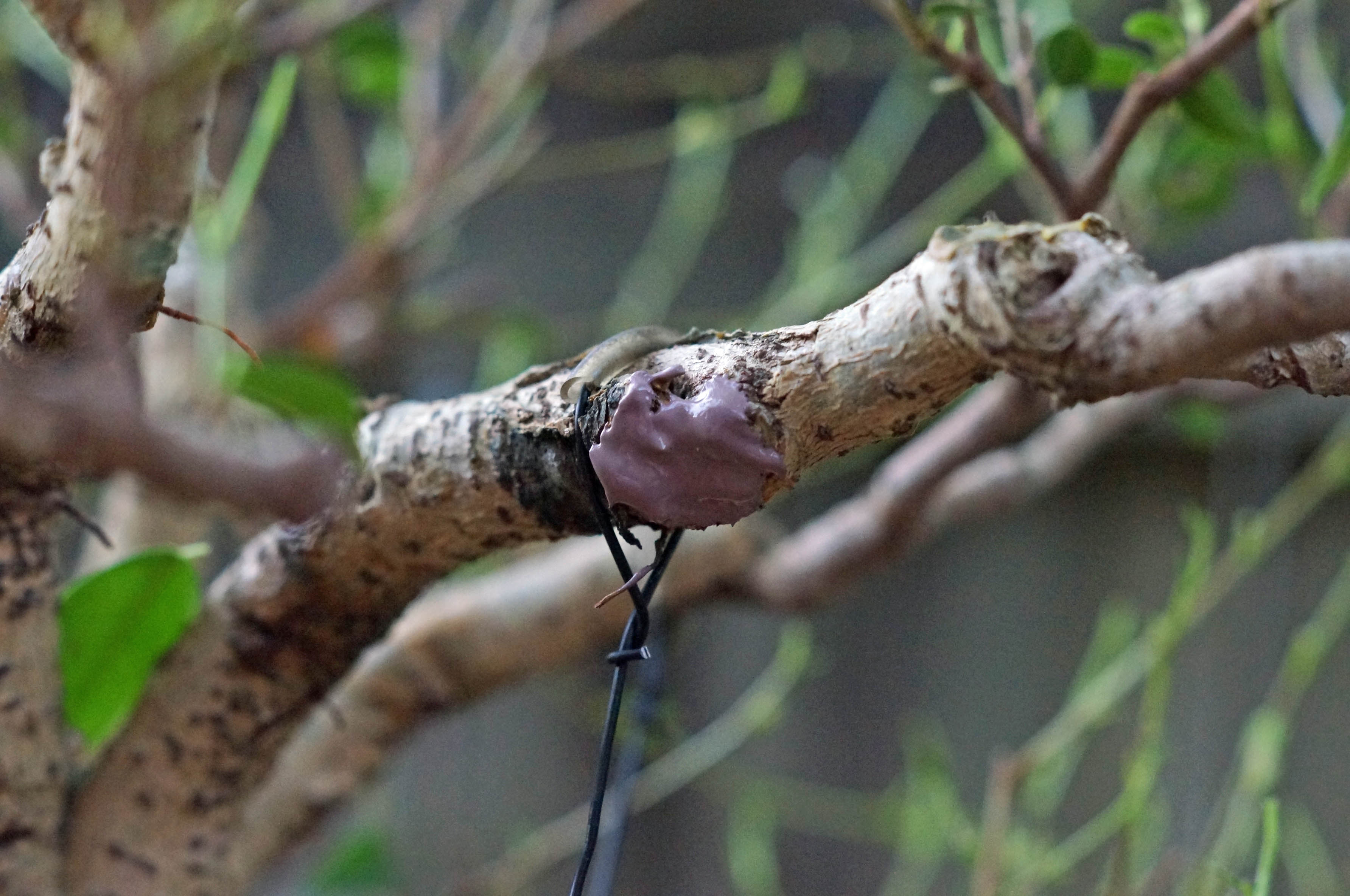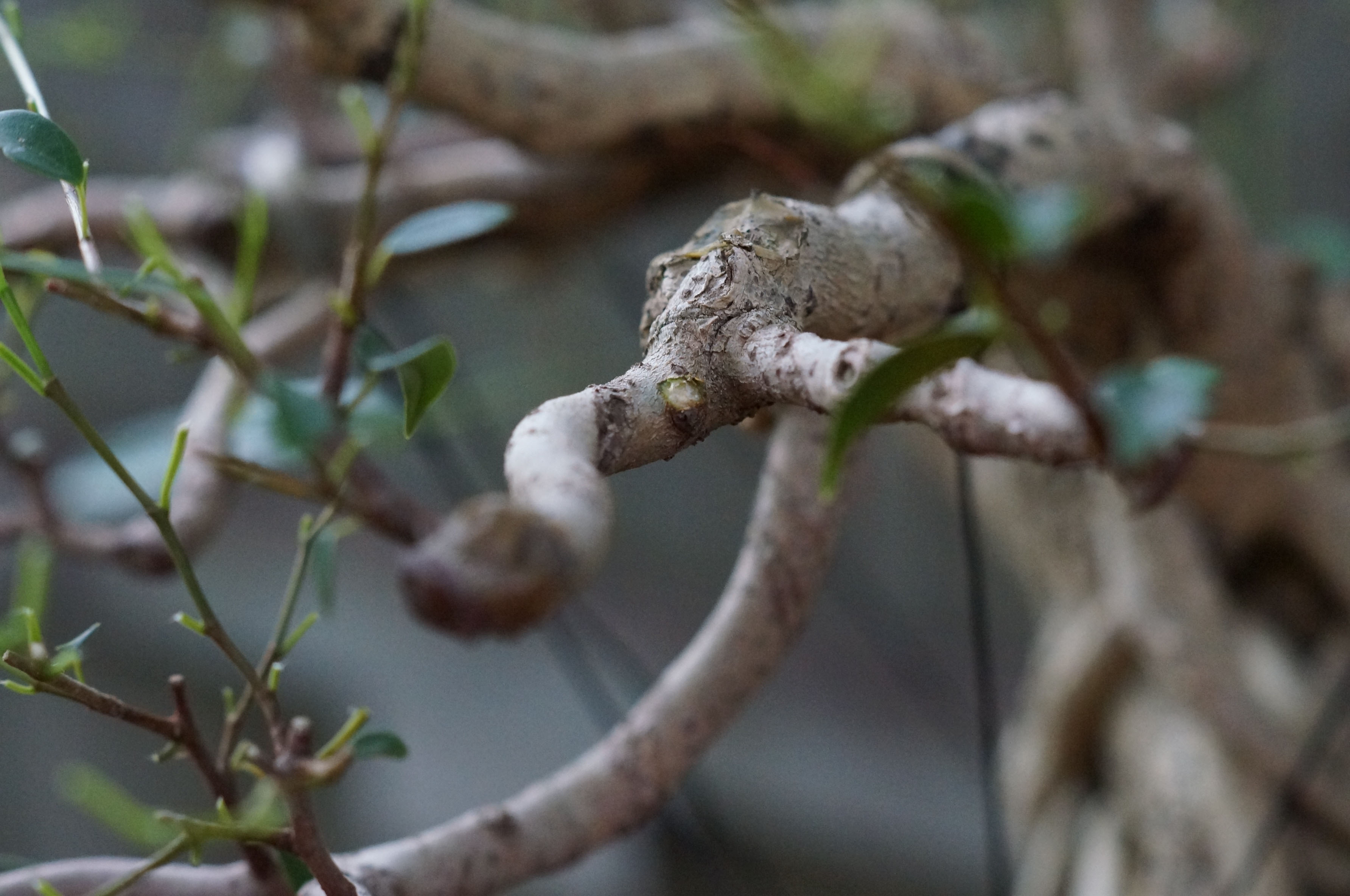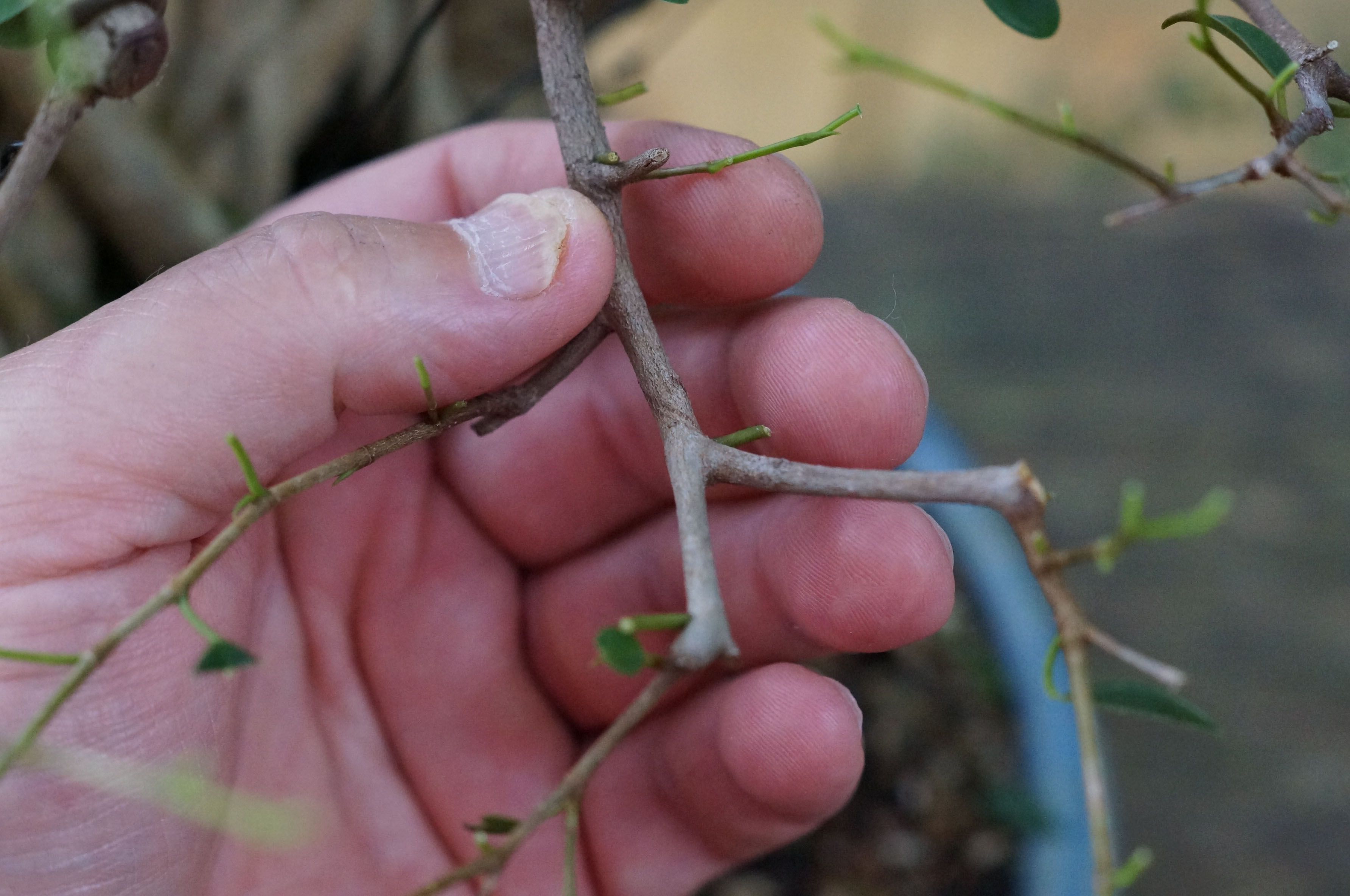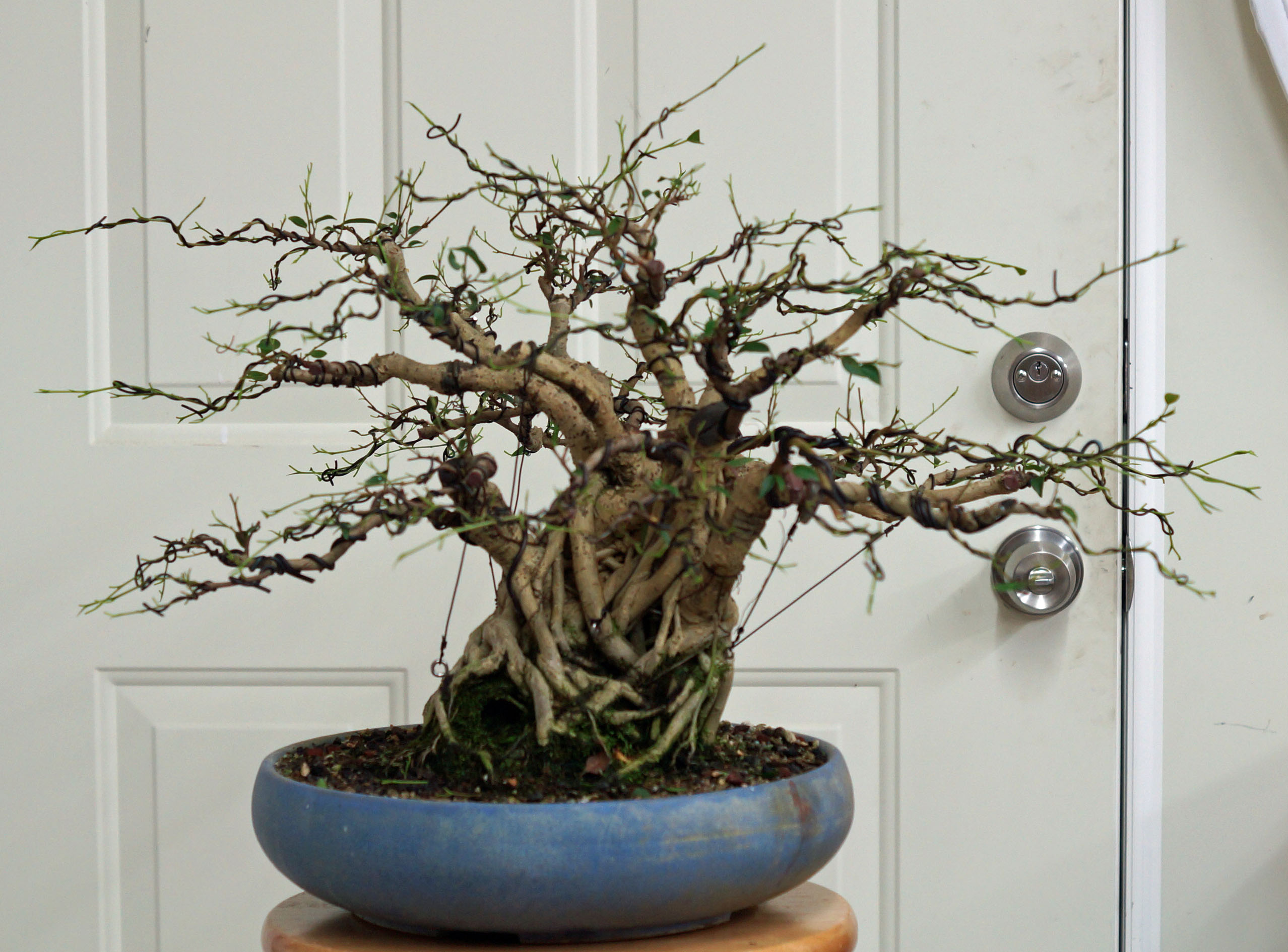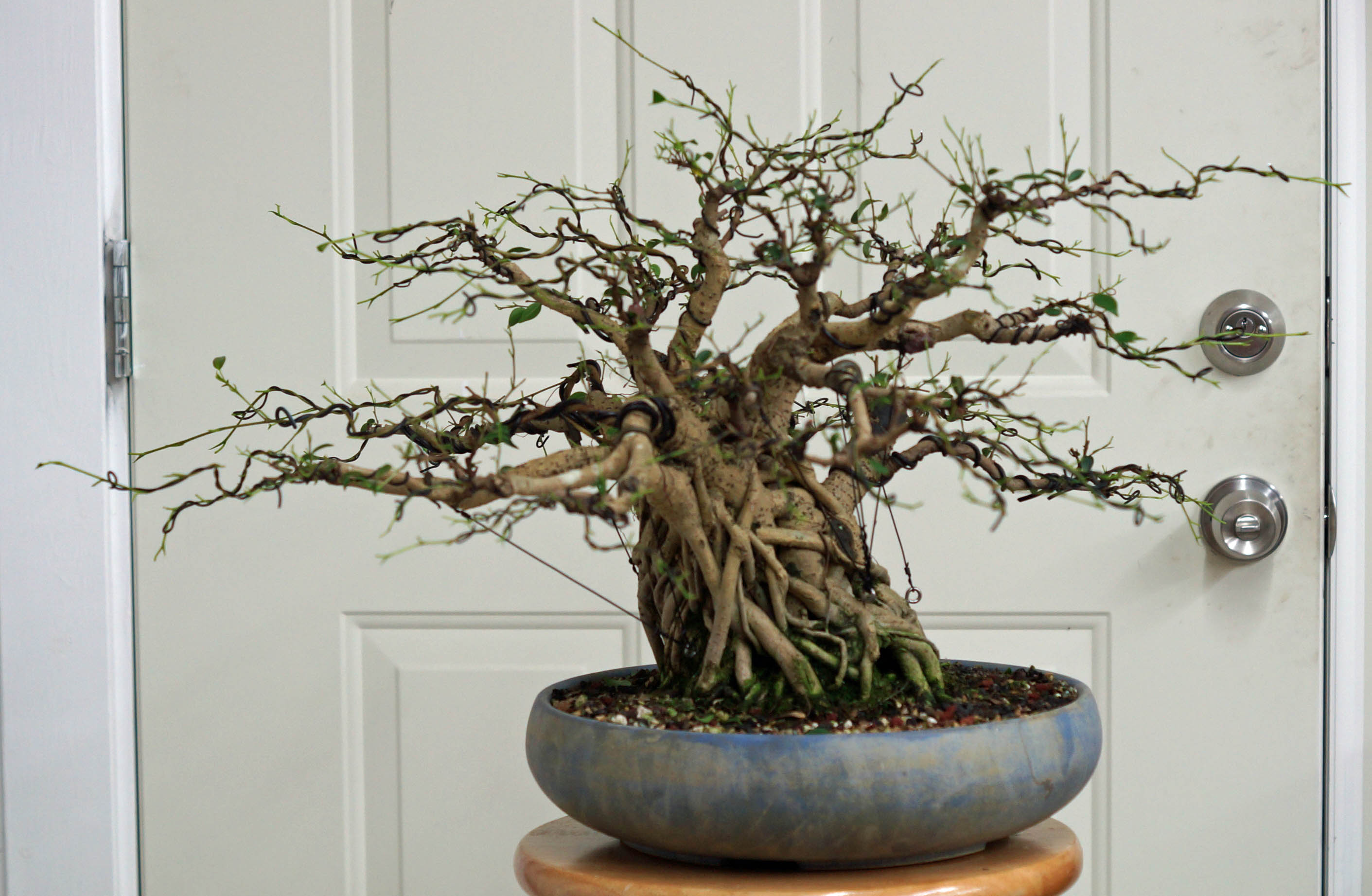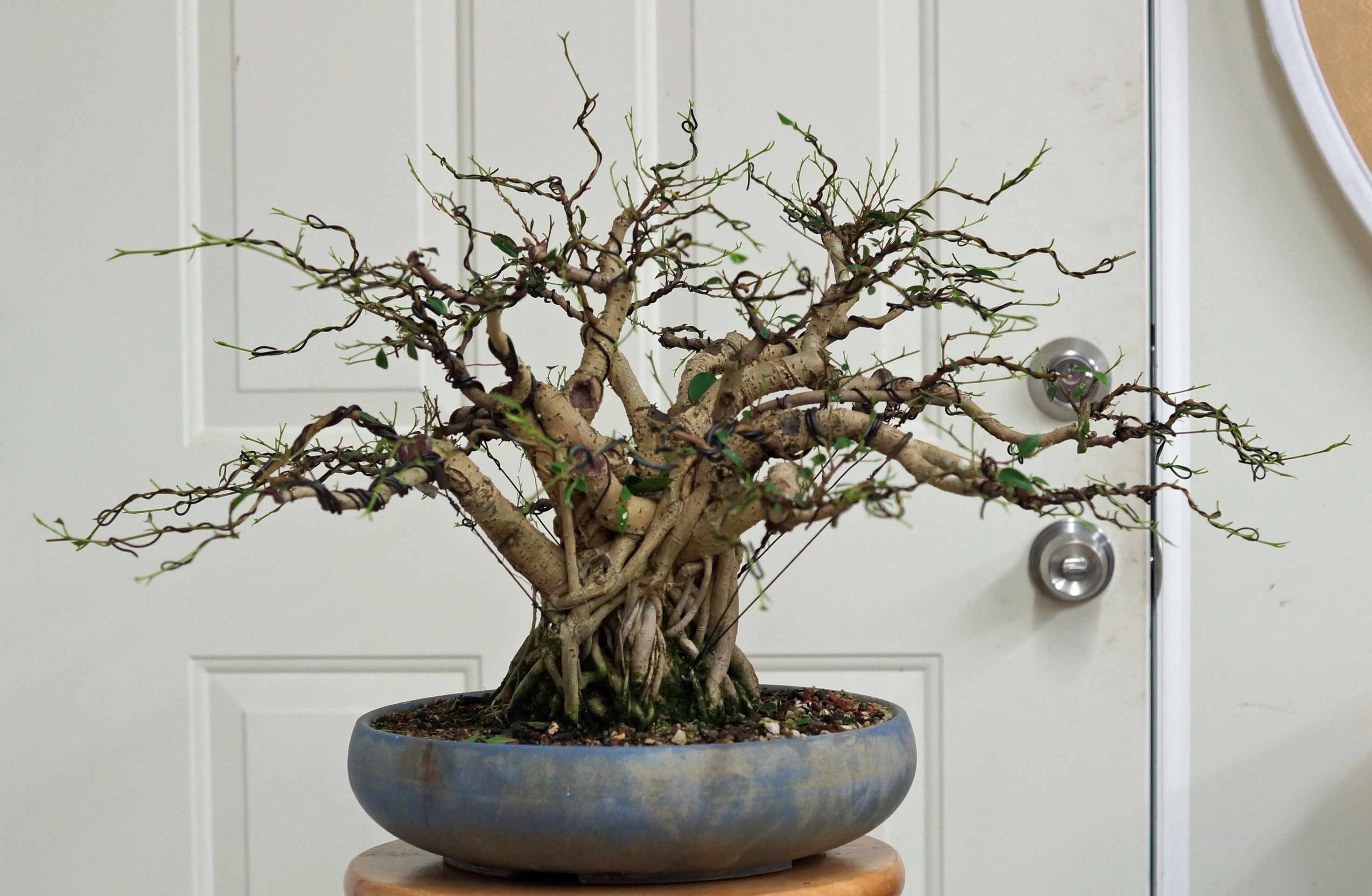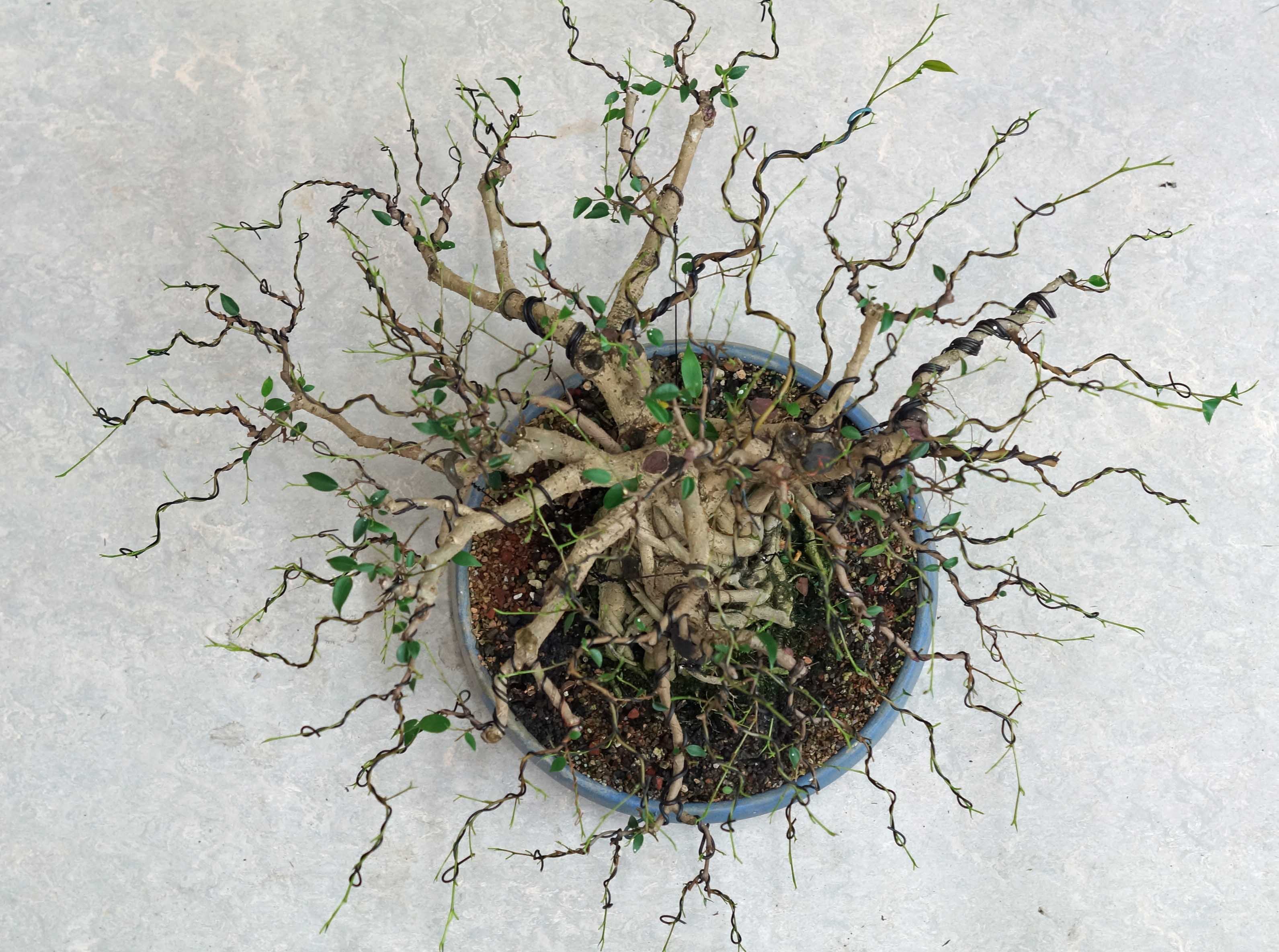I had a little time a few days ago, I decided to defoliate this ficus and give it a rewire. Normally you would not defoliate this late in the year, but here in the deep South we still have another month or so of warm weather and the tree should have plenty of time to recover. Why defoliate? On an evergreen, if you want to wire it is difficult to see the structure of the tree with all of the leaves on and it is also difficult to apply the wire. Not being able to see the structure also makes it difficult to prune, you can't see what needs to go and what needs to stay. Defoliation is also a way to decrease leaf size, defoliating one or two times a year will cause a significant decrease in leaf size.
This how it looked before I started the work. I had cut it back several times earlier this Summer but have not defoliated, just basically tried to build some ramification.
Ficus Bud
While defoliating, I will be cutting each leaf off individually and leaving the petiole. I do this to preserve the latent buds that are present at the base of the petiole, if I just pulled them off with my hands I chance destroying the buds that will make the new leaves. Also be careful not to damage any buds that have already started to form. Here is an example, it is the horn like projection in the picture to the right.
Latex Caulk Cut Paste
Time out for cut paste. It is widely believed that you don't need to use cut paste to seal pruning wounds on ficus since their sap contains latex. This is true and very small branches, say pencil lead size or smaller, don't need sealing. Larger branches and scars need sealing, if you don't seal them, they will rot. The reason for this is that the tree will seal itself off at the edges of the wound, leaving the soft wood in the middle exposed. For cute paste, I use latex caulk thinned with a little water. There are special "bonsai" preparations for this, but they have to be ordered and are expensive. The caulk works just a well, comes in many colors, and is readily available. It is also cheap, leaving more money for beer.



